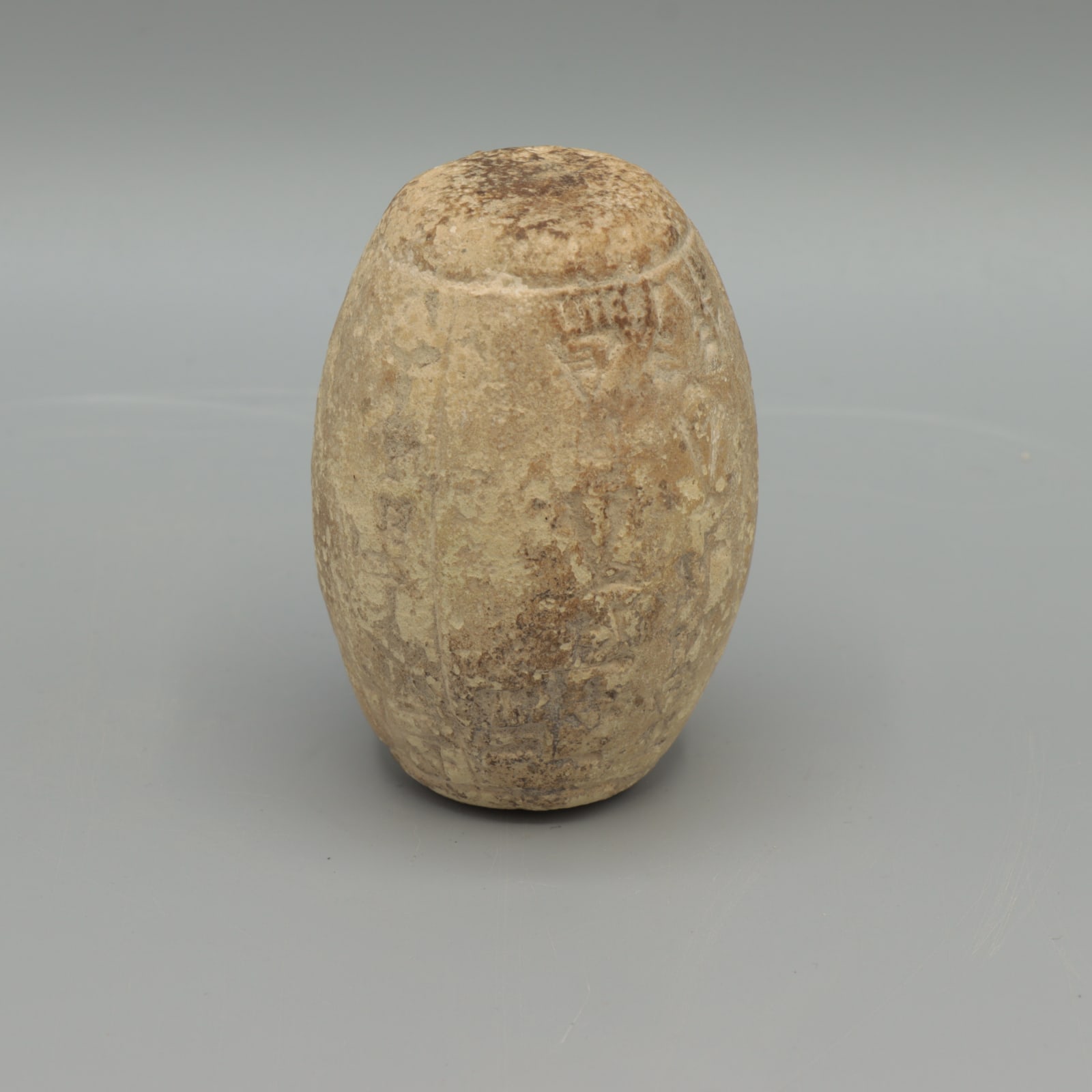Sumerian Mace Head, c.3300-2600 BC
Terracotta
height 7.7 cm
height 3 in
height 3 in
EL.0032
Sumer was among the earliest known civilisations in southern Mesopotamia (modern south-central Iraq). It emerged between the 6th and 5th millennium BC, and lasted for thousands of years. The first...
Sumer was among the earliest known civilisations in southern Mesopotamia (modern south-central Iraq). It emerged between the 6th and 5th millennium BC, and lasted for thousands of years. The first examples of many innovations considered hallmarks of human existence come from Sumer: their cuneiform script is one of the oldest that has been deciphered, and was used for administrative and literary purposes; they developed an early form of arithmetic; and they lived in highly-organised city states with codified legal systems, loans and debt, and complex mythological beliefs. Cuneiform records can be used to tell us a great deal of information about Sumerian life and society. The city-states each had a temple dedicated to the patron deity of the city, and they were ruled by priestly governors or kings. Sumerian artworks have been discovered in a variety of media; as well as clay and several types of stone, they also made objects which use precious metals and materials that would have had to be imported such as lapis lazuli.
The mace, consisting of a stone or metal head on top of a heavy shaft, is one of mankind’s earliest weapons. Sumerian mace heads were usually made of stone, and were often decorated. This terracotta mace head is ovoid-shaped, with a flat surface at either end, one of which has a round hole in the centre. A carved line at either end delineates the section in which the mace head is decorated, and this space is itself divided into four sections by vertical lines. The decoration is worn in some areas, but it looks to be Cuneiform script. The material appears polished in places, particularly on the side and the top. The importance of maces in Sumerian culture is evidenced by the fact that the god Ninurta, who was associated with farming, healing, hunting, law, scribes, and war, had as his weapon an enchanted talking mace called Sharur (“smasher of thousands”). Its material suggests that it may have been made for symbolic or ritual purposes rather than to be used as a weapon.
For another pottery mace head with cuneiform decoration, see British Museum 140889.
The mace, consisting of a stone or metal head on top of a heavy shaft, is one of mankind’s earliest weapons. Sumerian mace heads were usually made of stone, and were often decorated. This terracotta mace head is ovoid-shaped, with a flat surface at either end, one of which has a round hole in the centre. A carved line at either end delineates the section in which the mace head is decorated, and this space is itself divided into four sections by vertical lines. The decoration is worn in some areas, but it looks to be Cuneiform script. The material appears polished in places, particularly on the side and the top. The importance of maces in Sumerian culture is evidenced by the fact that the god Ninurta, who was associated with farming, healing, hunting, law, scribes, and war, had as his weapon an enchanted talking mace called Sharur (“smasher of thousands”). Its material suggests that it may have been made for symbolic or ritual purposes rather than to be used as a weapon.
For another pottery mace head with cuneiform decoration, see British Museum 140889.
